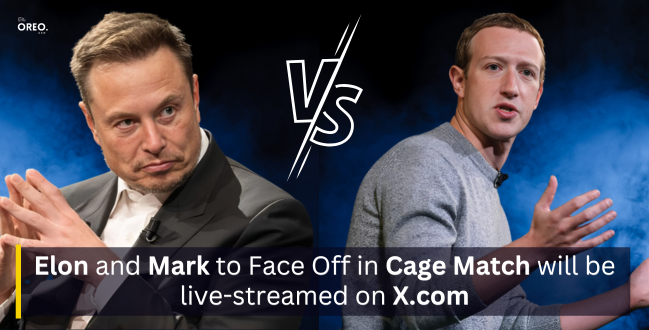Tesla Aims to Launch Full Self-Driving Cars: Will Musk’s Prediction Hold True?
Tesla CEO Elon Musk has predicted that the company will release fully autonomous vehicles “later this year.” Musk predicted a video appearance at the World Artificial Intelligence Conference in Shanghai. He said that Tesla is “very close to achieving full self-driving without human supervision.”
Musk further revealed that the company is working on a new chip that will make its self-driving software even more powerful. Exactly when Tesla will release fully autonomous vehicles is still a mystery, but he said it will be “later this year.”
One thing to note here is Musk has made similar predictions in the past, and they have not always come to fruition. In 2016, he said that Tesla would have fully self-driving cars on the road by 2017. In 2019, he said that the company would have “feature complete” full self-driving by the end of that year.
But who knows? It might just come true this year! Despite these earlier predictions falling short, Tesla has made significant strides in autonomous driving technology.
Musk has also been known to surprise people with his ability to deliver on ambitious goals. In 2020, Tesla released its Full Self-Driving Capability package, which includes several advanced driver assistance features. The package is not yet fully autonomous, but it can handle some complex driving tasks, such as changing lanes and parking.
Additional Insight
- Tesla’s fully autonomous cars can drive “anywhere in the world where there are roads.”
- They will also be able to handle “complex situations” like driving in traffic and parking.
- Musk did not say how much Tesla’s fully autonomous cars will cost.
- The company currently sells its Full Self-Driving Capability package for $12,000.
As a matter of fact, Tesla is not the only company working on self-driving cars. Other companies like Waymo and Cruise are also developing similar technology. However, Tesla is one of the most well-known companies in the self-driving car space.
Tesla is currently testing its self-driving cars on public roads in the United States and Canada. The company has logged over 10 billion miles of self-driving data.
Tesla’s self-driving software is powered by its own Autopilot chip, which is designed specifically for self-driving cars. Its self-driving cars are equipped with a variety of sensors, including cameras, radar, and ultrasonic sensors. They will be able to perform a variety of driving tasks, such as changing lanes, parking, and navigating through traffic.
How much will Tesla’s self-driving cars cost?
The price of Tesla’s self-driving cars has not yet been announced. However, Tesla CEO Elon Musk has said that the company plans to sell self-driving cars at a “premium” price. This suggests that Tesla’s self-driving cars could be more expensive than traditional cars.
There are a few reasons why Tesla’s self-driving cars might be more expensive. First, the technology is still in its early stages of development, and it is likely to be more expensive to produce than traditional cars. Second, Tesla’s self-driving cars will be equipped with a variety of sensors, such as cameras, radar, and ultrasonic sensors, which can be expensive to manufacture. Third, Tesla’s self-driving cars will require a significant amount of data to train the software, which can also be expensive to collect.
Of course, the price of Tesla’s self-driving cars could also depend on the level of autonomy that the car offers. For example, a car that can only drive itself on limited-access highways might be less expensive than a car that can drive itself in any environment.
But here’s something from the news:
- The price of Tesla’s Full Self-Driving (FSD) Beta has increased from $12,000 to $15,000.
- Tesla’s self-driving cars will be equipped with a variety of sensors, such as cameras, radar, and ultrasonic sensors.
- Tesla’s self-driving cars will be able to drive themselves on highways and city streets.
- Tesla’s self-driving cars are still in beta testing and are not yet considered to be fully autonomous.
- Tesla warns drivers that FSD Beta is not perfect and that it may make mistakes.
- The price of Tesla’s self-driving cars will depend on a variety of factors, including the cost of technology, the level of autonomy, and the demand for self-driving cars.
What are the potential safety risks of self-driving cars?
Self-driving car technology is still in its early stages of development, and these risks will likely be mitigated as the technology matures. It has the potential to revolutionize transportation, but they also pose some potential safety risks.
Let us consider some of them here.
Software malfunctions
Self-driving cars are controlled by software, and like any software, they can malfunction. This could lead to the car making a mistake, such as crashing into another car or pedestrian.
Sensor errors
Self-driving cars use a variety of sensors to detect their surroundings, such as cameras, radar, and ultrasonic sensors. If one of these sensors malfunctions, it could lead to the car misinterpreting its surroundings and making a mistake.
Also Read: Tesla’s Extreme Weather Testing: Can The Model X And Model Y Handle The Heat?
Hacking
Self-driving cars are connected to the internet, which means they are potentially vulnerable to hacking. If a hacker were to gain control of a self-driving car, they could potentially cause it to crash or behave in other dangerous ways.
Misunderstanding of the environment
Self-driving cars are trained on a massive dataset of driving data, but this data may not be representative of all possible driving situations. This could lead to the car making a mistake in a situation that it has not been trained for.
Human error
Even if self-driving cars are perfectly safe, human error could still lead to accidents. For example, a human driver could accidentally hit the brakes or turn the steering wheel, causing the self-driving car to crash.




3 Comments